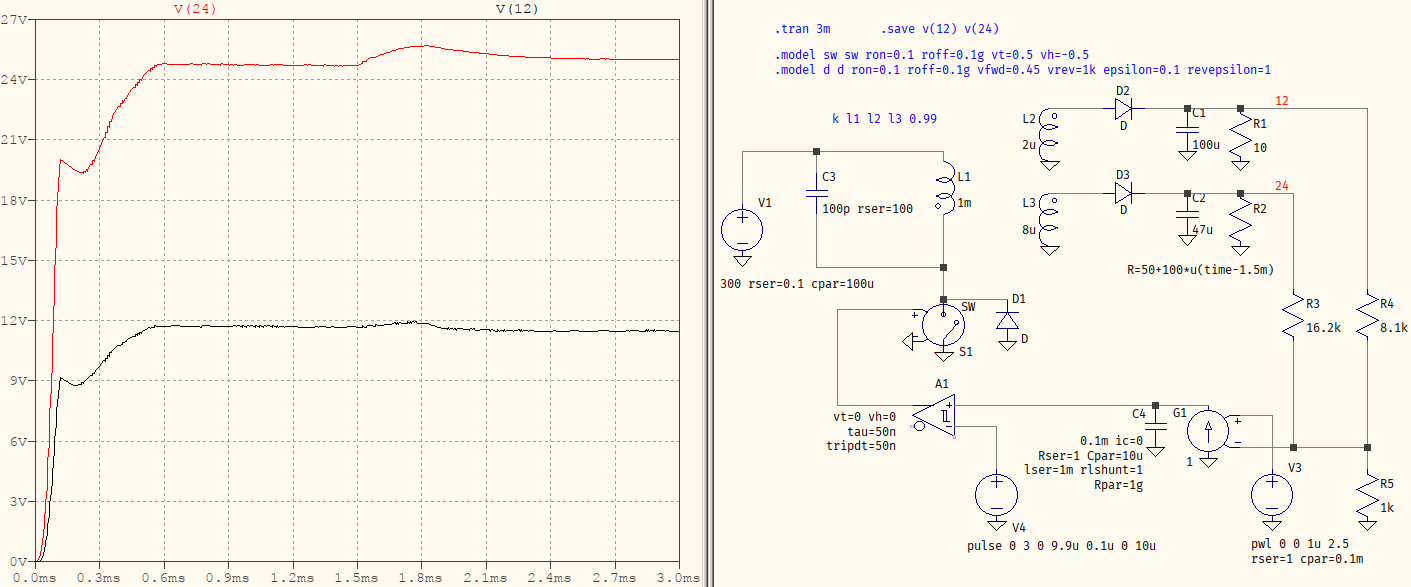Post History
Try searching for "multiple outputs flyback". Basically, you can't control each, individually, instead you make the voltage feedback as the average between the outputs. Here's a quick'n'dirty test ...
#1: Initial revision
Try searching for "multiple outputs flyback". Basically, you can't control each, individually, instead you make the voltage feedback as the average between the outputs. Here's a quick'n'dirty test to show what I mean, with a simple voltage mode concoction (don't give it too much thought for the values, they work enough for this example):  `R3`, `R4`, and `R5` form a combined resistive divider which make the averaged value of the outputs appear at their junction. This is the one that the loop considers to follow. The disadvantage is that whatever perturbation exists on one output, only, will affect the other(s), too: `R2` is the load for the 24 V (give or take) jumps from 50 Ω to 150 Ω, and you can see how the 12 V output drops a little. It's still stabilized, but it's the *average* of the outputs that is monitored, not any output in particular.


















